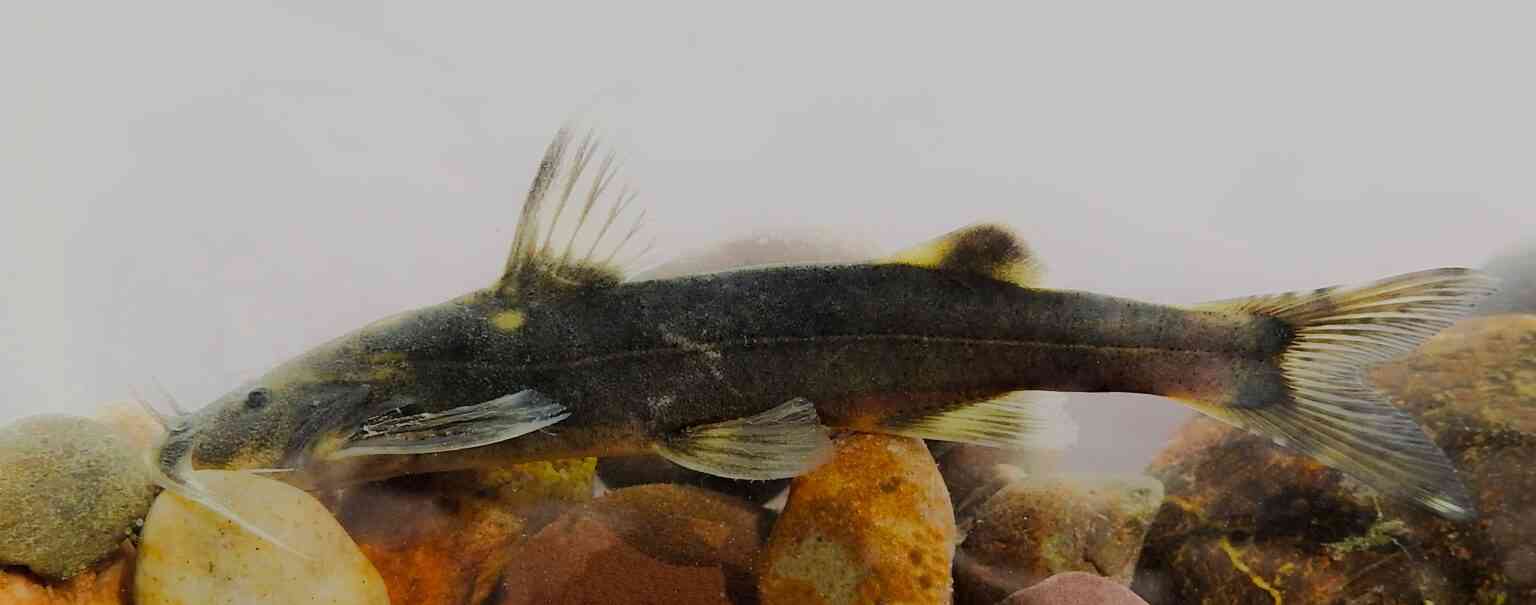In the early 2010s, taxonomist Balaji Vijayakrishnan was stationed in Rudrapur, Uttarakhand, where he worked for a private company. Every weekend, he would pack a net, and some bags and leave on an impromptu fishing trip to remote locations along the Ganga river.
Over three years, Vijayakrishnan amassed more than 300 specimens, amounting to roughly 30-40 species of loaches, catfishes and barbs. When he shifted base to Mumbai, the entire collection of specimens was sent to his parents’ residence in Chennai.
But in a cruel twist of fate, the Chennai floods of 2015 wiped out a majority of Vijayakrishnan’s collection. Stored in containers of formaldehyde and ethanol, the specimens were arranged in the basement parking of the house. Floods in 2016 further reduced the collection to zero specimens. “I don’t know if I can ever get back that collection,” Vijayakrishnan said.
Over the last decade, through annual visits, sometimes two-three trips a year, the independent researcher has been able to retrieve (in a sense) about 10% of the original collection. Most species were catfishes of the genus Glyptothorax and loaches of the genus Schistura.
In March this year, the self-taught taxonomist, along with another researcher Gaurav Anil Shinde, published a research paper in the journal Zootaxa, describing two new species and revalidating a species of the Glyptothorax genus from the Ganga river basin.
The two newly described species are Glyptothorax bhurainu and Glyptothorax himalaicus. The revalidated species is Glyptothorax dakpathari, named after its locality, which is the Dakpathar Barrage on the Yamuna river. The duo has three to four more papers in various stages of preparation for the genus Glyptothorax from the Ganga river basin. There will be three more new species, and a couple more revalidations, according to Vijayakrishnan.

Hillstream catfish
Catfishes are a group of ray-finned fishes found on all continents except Antarctica. Although they are believed to have lived in Antarctica millions of years ago when its weather was warmer.
Majority of catfishes are bottom-dwelling and bottom-feeders, consuming organic debris, aufwuchs (animal and plant matter attached to submerged surfaces), smaller fish, insect larvae, and crustaceans. Many catfish species also indulge in scavenging, which helps keep water bodies clean and prevents excessive organic waste build-up, which could otherwise lead to oxygen depletion. These factors help regulate and maintain a balanced ecosystem.
“They (catfish) are characterised by the presence of barbels, which resemble a cat’s whiskers, and hence their name,” said Heok Hee Ng, a biodiversity researcher at the Lee Kong Chian Natural History Museum of the National University of Singapore, not associated with the study. Scales are absent for these fishes, although some of them have bony plates covering their body.
According to Ng, a prolific fish taxonomist and a specialist in the systematics of Asian catfishes, there are more than 3,000 species of catfishes known worldwide, with some estimates exceeding 4,000. Catfishes are a primarily freshwater group (although two of the 39 families inhabit marine waters). “Catfishes are a major component of the freshwater fish biota in most systems, usually comprising about one-fifth of the total freshwater fish diversity,” he said.
“In India, there are more than 300 catfish species, although this number is likely a conservative estimate, given how little we understand catfish diversity in India,” Ng added.
Glyptothorax belongs to a family of catfishes known as the Sisoridae. Sisorids are primarily hillstream catfishes, with many species inhabiting torrential hill streams. There are about 90-100 species globally, with a distribution that mirrors the Sisoridae, according to Ng.
“They are found in rivers throughout the entire southern arc of the Asian continent; from the Caspian drainages of Türkiye to eastern and southern continental Asia and the Greater Sunda Islands,” he said.


“In India, they are particularly diverse in the northeast, where 40-45 species are known. In the Ganga, so far, including the ones we have described, about 16 species are known,” Vijayakrishnan said.
Sisorid catfishes display numerous adaptations to live in strong currents, one of which is the presence of the thoracic adhesive apparatus, or TAA, in the genus Glyptothorax. “The TAA is an oval field of skin folds on the chest that help the catfish adhere to the substrate and prevent them from being washed away by the strong currents,” Ng said.
The shape of the TAA is an important tool for differentiating between Glyptothorax species. Another key way is through the presence or absence of plicae, small notches on the underside of the fins that help them cling to rocks.
In their paper, Vijayakrishnan and Shinde, revalidated Glyptothorax dakpathari, first described in 1976 and later synonymised with Glyptothorax gracilis, a species known from Nepal but also found in India. The plicae are absent in G gracilis, while they are present in G dakpathari. “Unfortunately, the original description of the G dakpathari also says they are absent. A close examination of the type specimens of G dakpahtari reveals that it has plicae and is not a synonym of G gracilis,” Vijayakrishnan said.

Fish diversity
G himalaicus and G bhurainu specimens were collected from shallow, fast-flowing streams from the upper reaches of the Ganga basin in the Haridwar district of Uttarakhand.
According to Vijayakrishnan, the Ganga river holds “more treasures than most people understand.” “So far, the number of fish species in the Ganga is known to be anywhere between 100 and 200. But it is severely underreported, in my opinion,” he said.
The Brahmaputra river, in comparison, sees constant research activity, with “at least a dozen new fish species described on an annual basis”. “The Ganga is at least as biodiverse as the Brahmaputra or other rivers in northeast India,” Vijayakrishnan said. “In addition to new species, there’s a lot of obscure or lost species like G dakpathari. But no one has bothered to revalidate them when the material is very much evident,” he added.
“The discovery of new Glyptothorax species in the Ganga River drainage, India’s most well-known river system, highlights how poorly we understand India’s freshwater fish diversity,” said Ng. “[It] also shows that despite continued habitat degradation, discovering new species is still possible if one looks hard enough.”
According to Ng, understanding catfish diversity will give greater impetus to conserve freshwater habitats. “Given that freshwater systems globally, particularly in India, are under severe anthropogenic threat and that it would not be possible to conserve all freshwater habitats, better understanding catfish diversity will allow us to make better-informed decisions on the priority areas for conservation,” he said.

Independent research
As an independent researcher, Vijayakrishnan is met with numerous stumbling blocks in his efforts to spotlight the freshwater fish diversity in the country.
A major deterrent is a lack of institutional backing. Even though there is published research under his name, without an official letterhead or email address, it is hard to access museums. “I can’t write a letter and say I want to examine these specimens. It doesn’t sell, unfortunately,” Vijayakrishnan said. “I don’t think it is a flaw in the Indian system, I think it is a flaw with the system in general, globally.”
Funding is the other hurdle. Currently, Vijayakrishnan fully finances his research, but he believes it is what will eventually slow them down. “I’d love to go to Uttarakhand every month, but no chance that’ll ever happen. I have to space it out, plan it carefully, and make sure I don’t overspend,” he said.
After completing the papers currently in progress, he wants to shift his focus from the Garhwal Himalayas (Western Uttarakhand) to the Kumaon Himalayas, which is closer to Nepal.
New species are being discovered in Nepal, even in the Glyptothorax genus, according to Vijayakrishnan. “We hope coordinated surveys in under-explored rivers such as the Ganga can be a major boost for [freshwater fish research],” he said.
This article was first published on Mongabay.










